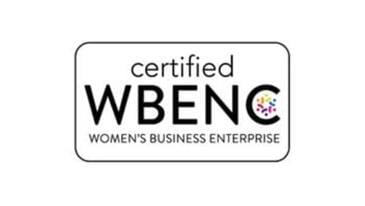Common House Fly Pest Control
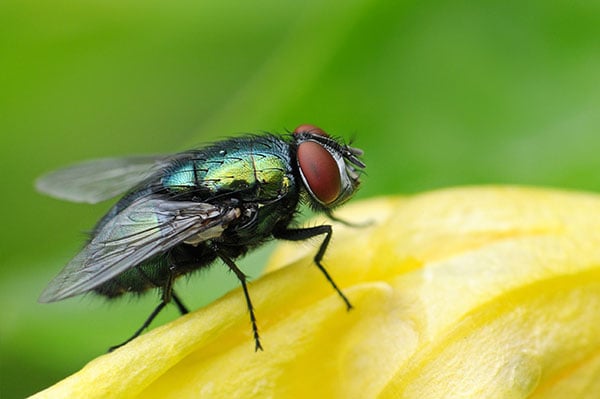
There are two main flies seen around all summer:
-
House Fly (AKA filth fly, garbage fly)
-
Blow Fly (AKA bottle fly, blue fly, green fly)
Both types of flies can spread disease easily because of the way they digest their food and eliminate their waste. When feeding, these flies regurgitate liquid from the stomach to dissolve food, and then use their sponging mouthparts to suck it up. They leave fecal spots, or “specks,” where they have walked. Because of these habits, they are capable of transmitting filth-related diseases such as diarrhea and dysentery.
What Kind of Flies Are in My Home?
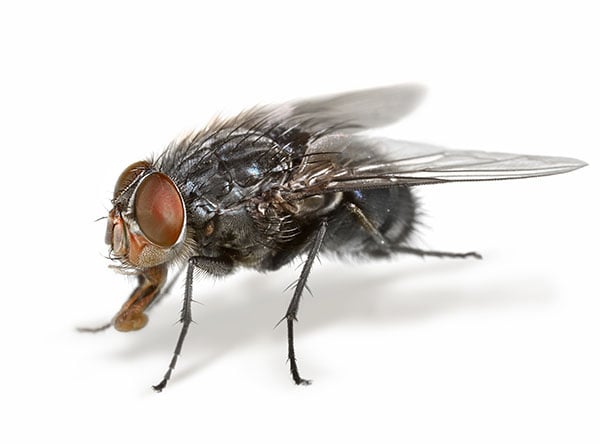
HOUSE FLY
The house fly is one of the most common of all insects. Adults are dull, medium-gray flies, 1/6- to 1/4- inch long, with four dark stripes on the thorax and orange/red “eyes”. They have sponging, non-biting mouthparts for sucking up liquefied foods. These medium-sized flies are attracted to human and animal waste and decaying garbage. Maggots are one of the life cycle stages of houseflies.
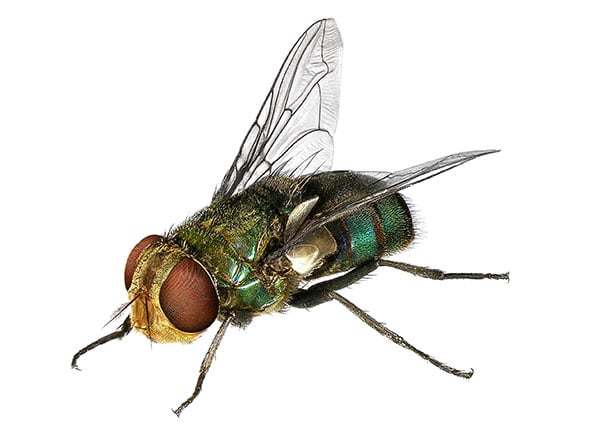
BLOW FLY
The blow fly generally ranges from ¼- to ½-inch long and are characterized by metallic blue-green or copper-colored bodies. In urban areas, they are sometimes more abundant than houseflies. Females lay eggs on meat scraps often in the garbage, as well as on dead animals and animal wounds. They may also deposit eggs onto feces-caked hair or wool on pets and other domestic animals.
Common House Fly Prevention
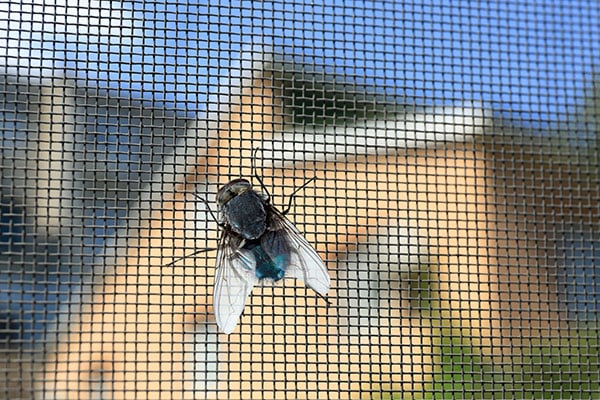
Again, truth is, unless your structure has been vacuum-packed and never opened to the outdoors, you’re going to have these flies. However, there are measures you can take that will greatly reduce their presence. Sanitation is the most important and effective measure in controlling common flies.
On the interior, keep food of all types in a well-sealed container, don’t let trash containers get ripe and spoil, and keep doors and windows closed. Best elimination method on the interior is the good, old-fashioned fly swatter.
On the exterior, remove all potential larval food materials such as animal manure, rotting mulch, lawn clippings, and animal or bird carcasses. Compost piles, if not properly maintained, may also produce large numbers of filth flies. If this is the case, eliminate the compost pile or cover it with black plastic sheeting, which will trap heat and reduce fly survival. Professional pest control treatments to the exterior of your structure will greatly reduce fly activity and survival on and in your space.
Our Common House Fly Control Process
Because they are capable of breeding so fast, sanitation, or eliminating breeding areas, is the most effective control measure. If breeding conditions are ideal, no amount of chemical will keep up with the population. Here are some breeding areas and what to do about them:
- Garbage cans & Dumpsters. Garbage should be picked up twice per week. Cans should be kept clean inside, but do not permit the wash water to soak into soil, because flies will then breed in the contaminated soil. Keep tight covers on the cans. Garbage cans and Dumpsters should be kept as far as possible from frequently used doors. Most flies in cities come from garbage cans.
- Inside restaurants. A large accumulation of moist garbage or food waste is a potential breeding area for house flies. Ordinary dirty conditions will not contribute to a house fly problem.
- Wet feed, corn, soybean meal or flour. Either dry the material out, or clean it up. On farms, more flies can breed in wet, high-protein feed than in manure. Wet grain, corn, or soybean spillage on the premises of grain elevators and railyards can also foster high fly populations.
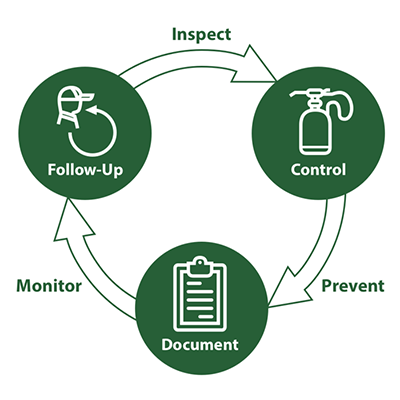
There are a number of effective mechanical, non-chemical control options including: Exclusion, Habitat Destruction, Insect Light Traps (ILTs) and other traps.
Even the most carefully planned ILT layout will NOT do the job of controlling flies without some supplemental insecticide applications, including: residual and contact sprays; baits; & larvacides.
Common House Fly Control With Plunkett's
At Plunkett’s, our goal is to help you quickly, conveniently, and in the most cost-effective way. We make every effort to be with you asap, usually within a day or two.
Learn More
There are a good number of flying insects that are particularly likely to make pests of themselves around your home. Some of the most common examples of flying insects Plunkett’s encounters frequently include:



